Made with: HTML, CSS, JavaScript, Node.js
The idea for the concept of the language learning method originated from my own experiences made some years ago while learning the Persian language. Studying this language as a native German speaker turned out to be difficult due to a lack of supporting resources, such as textbooks, apps, or online videos, at the time. Because of this, I had to piece together my knowledge about different grammatical characteristics and how to talk about different topics from the few books, videos, and websites that I found, as well as explanations from people who spoke Persian natively. Not having to follow a predetermined curriculum and being able to explore and find aspects I was genuinely interested in made learning genuinely exciting. Acquiring knowledge this way felt like my very own process of discovery. Personalized to my interests, my language skill was something I was creating on my own terms. I am certain that being able to study in this self-determined way ultimately made me confident about my accomplishments, kept me motivated to continue studying, and made learning enjoyable and exciting.
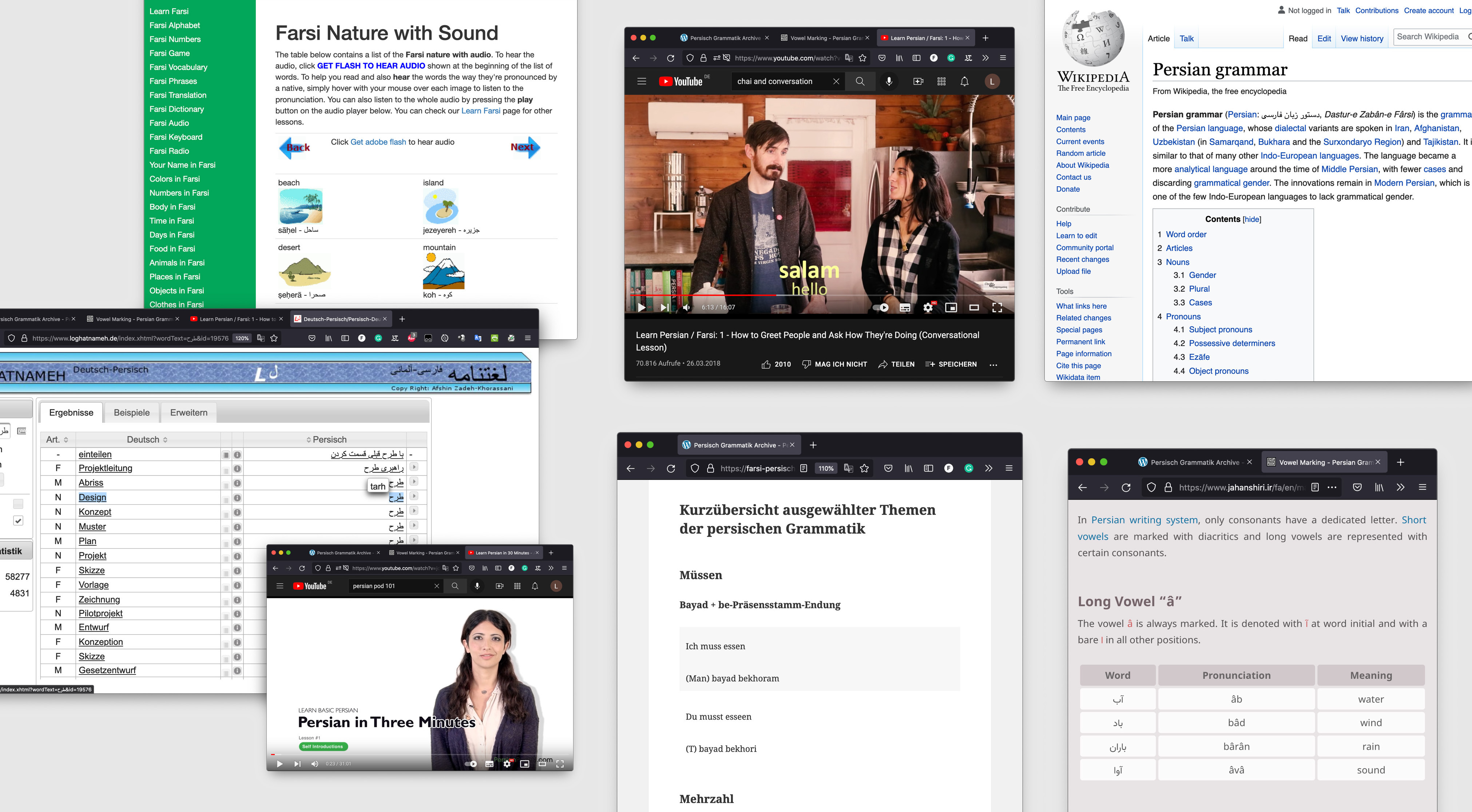
Studying Persian this way enabled me to travel to Iran and use my newfound language skills to communicate and connect with locals.

When we take a look at conventional education, learning does not at all happen like this. In a conventional classroom, a teacher in front of the class dictates what everyone has to do at the same time, at the same pace, and in the same order, regardless of the individual backgrounds, needs, strengths, and preferences of the students. Curricula are linear and students generally lack choice and control over their learning process, leaving virtually no space for their personal interests. Such teaching practices push students into a passive role and in combination with using external validation to reward or punish students for their performance (e.g. using grades) effectively train students to learn for the external reward and not the excitement and self-fulfillment that learning can provide (Lillard, 2017, pp. 2-14, p. 181).

Even though this image of a primary school classroom in the UK has been taken around 1900, the core ideas of conventional education did not change. Image source: http://www.shrivenhamheritagesociety.co.uk/listing.asp?listID=1317
Luckily, alternative approaches exist. Since I was myself a Montessori student for 10 years and have experienced both educational systems, I came to appreciate how from my experience, students in a Montessori classroom were much more able to maintain and even increase their motivation for learning. At the core of Montessori education, it is believed that intrinsic motivation is not created with external validation (like grades or material rewards) but emerges from the pride in your own accomplishments. That is why Montessori students find themselves in a curriculum that is always broad enough for them to make choices and take control to go after their strengths and incorporate their personal interests. As opposed to conventional school, the teacher does not dictate what everyone has to do at which time but acts more like a guide on the side - making sure that the general curriculum is followed by everyone and helping everyone individually to stay on track while leaving a major part of the organization to them (Lillard, 2017, pp. 27-31, pp. 307-308). In effect, the Montessori methodology rejects the conventional way of using rewards and punishment and instead aims to create an understanding that positive self-esteem and motivation are formed through pride in personal achievements. It aims to improve learning outcomes by maintaining the natural joy of learning so that students do not only learn for external validation but for their own enrichment (Lillard, 2017, p. 177).
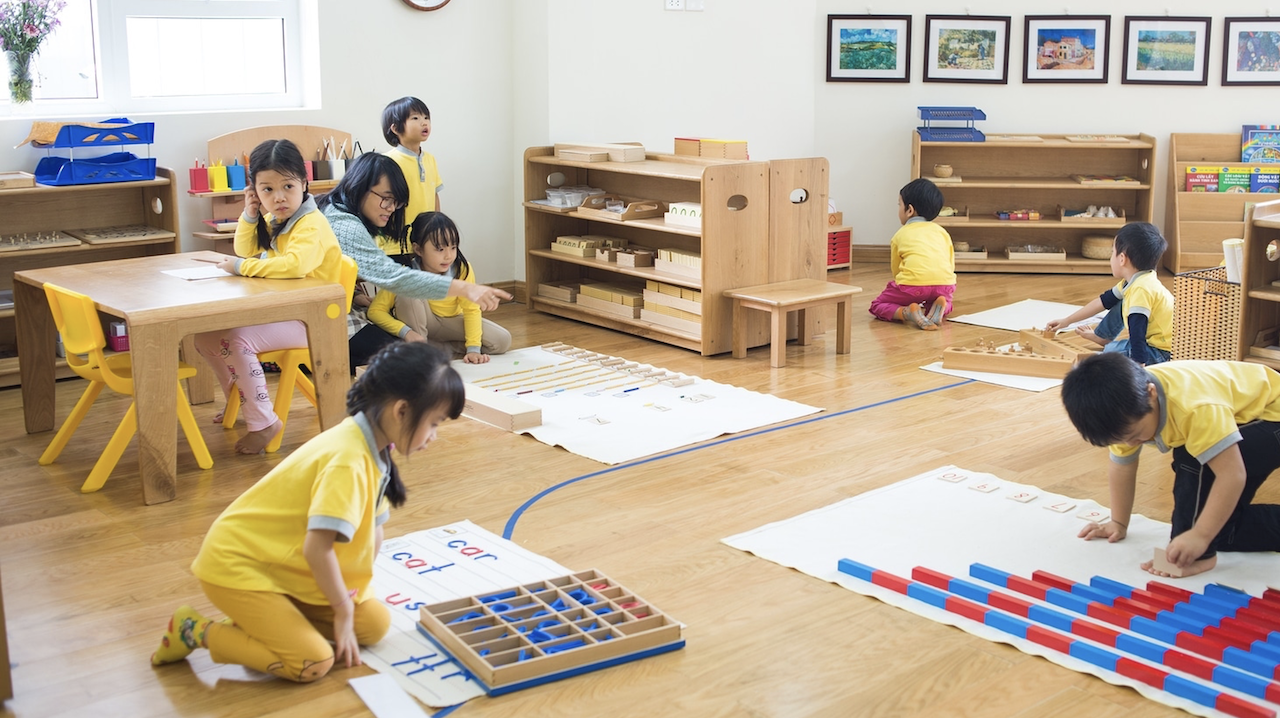
Children in a Montessori classroom are given liberties to be curious and to pro-actively make choices regarding their personal learning path. Teachers do not dictate the exact task everybody has to do but fulfills the role of a guide on the side. They make sure that the general curriculum is followed and help individual students to stay on track. Image Source: bhttps://www.criarconsentidocomun.com/por-que-en-las-escuelas-montessori-hay-un-circulo-pintado-en-el-suelo/
Similar to the Montessori approach, I believe that abandoning the
conventional passive way of learning and instead implementing a
curiosity-driven approach that emphasizes exploration and takes into
account individual needs and interests is a major contributor to
maintaining intrinsic motivation. Similar to the way teachers in the
Montessori classroom function as guides to ensure that children can
learn productively, algorithms within this application set limits on the
learners' liberties in place, which are however always broad enough to
provide multiple choices for pursuing individual learning paths.
Simultaneously, they ensure that no matter what choices are being made,
the learning process stays coherent and new skills build on already
acquired knowledge.
In some first iterations, I envisioned a course structure where learning
starts from the center from where paths towards multiple directions can
be taken. Here, two types of lessons would exist in the curriculum:
Circular lessons would act as the “enablers” of language ability -
lessons that teach conceptual understanding of a language (e.g. how the
language “works” from a structural point of view). Square / triangular
lessons would represent the content learners would be able to talk about
(e.g. topics like fruits, family, emotions). Different choices would
consequently result in differently looking course structures,
visualizing the learners individual process and reflecting their
individual abilities.
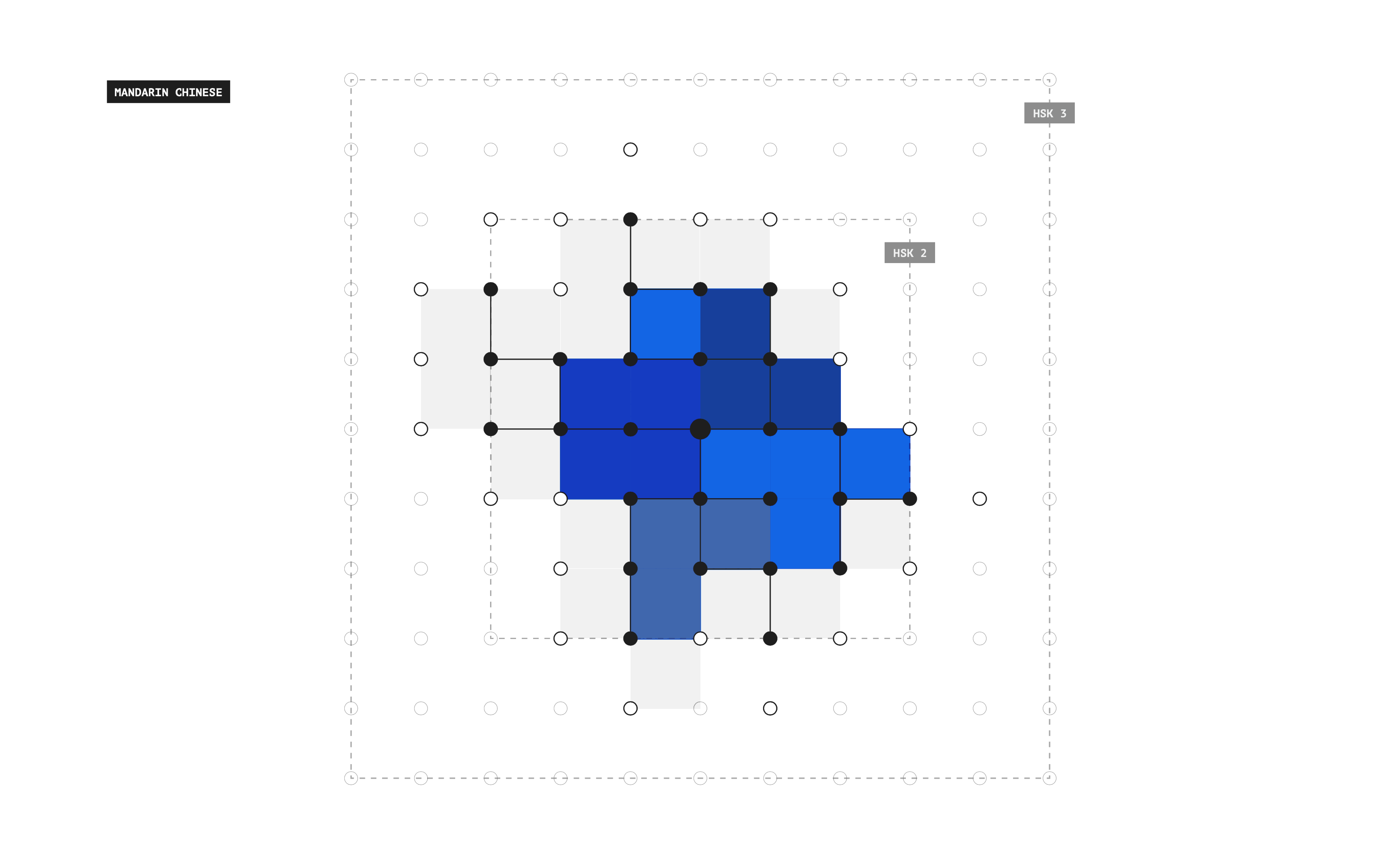
First concept: A course starts in the center. From there, multiple learning paths can be taken. The structure grows with ongoing progress depending on the individual choices that learners make.
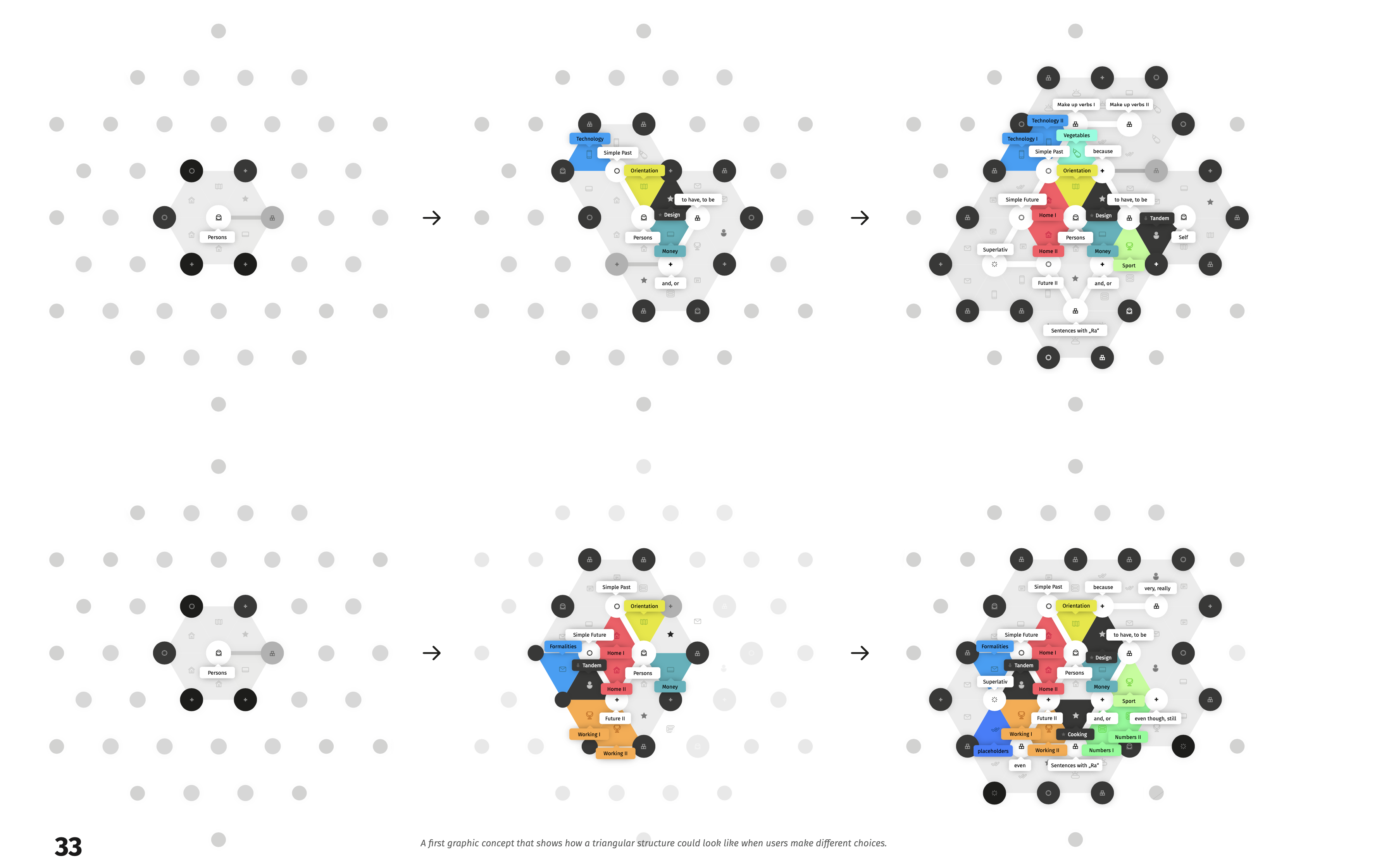
Second concept: The structure visualizes the individual learning paths that have been taken and the skills the different users have acquired.
Since I implemented algorithms that shape and restructure the course with ongoing progress depending on the individual choices users make, the approach increasingly got a more dynamic and fluid feel. In the following iteration, I tried to give the course structure an appropriate visualization that would communicate these behaviors to the user. Here, accomplished skills accumulate in the center. The lessons that the user can attempt because they have accomplished all necessary skills needed float around it. As soon as a new lesson has been accomplished, it is being pulled to the center and gets added to the users' skill.
While this might have been an interesting way to think about progress visualization, the course overview suddenly became rather unordered and messy, and finding lessons became increasingly difficult. Because I wanted to retain the idea that learners build their personal, individually shaped "skill-object" I remained with the more static triangular visualization for now. However, as this project is still a work in progress, many things can and should be changed with ongoing development.
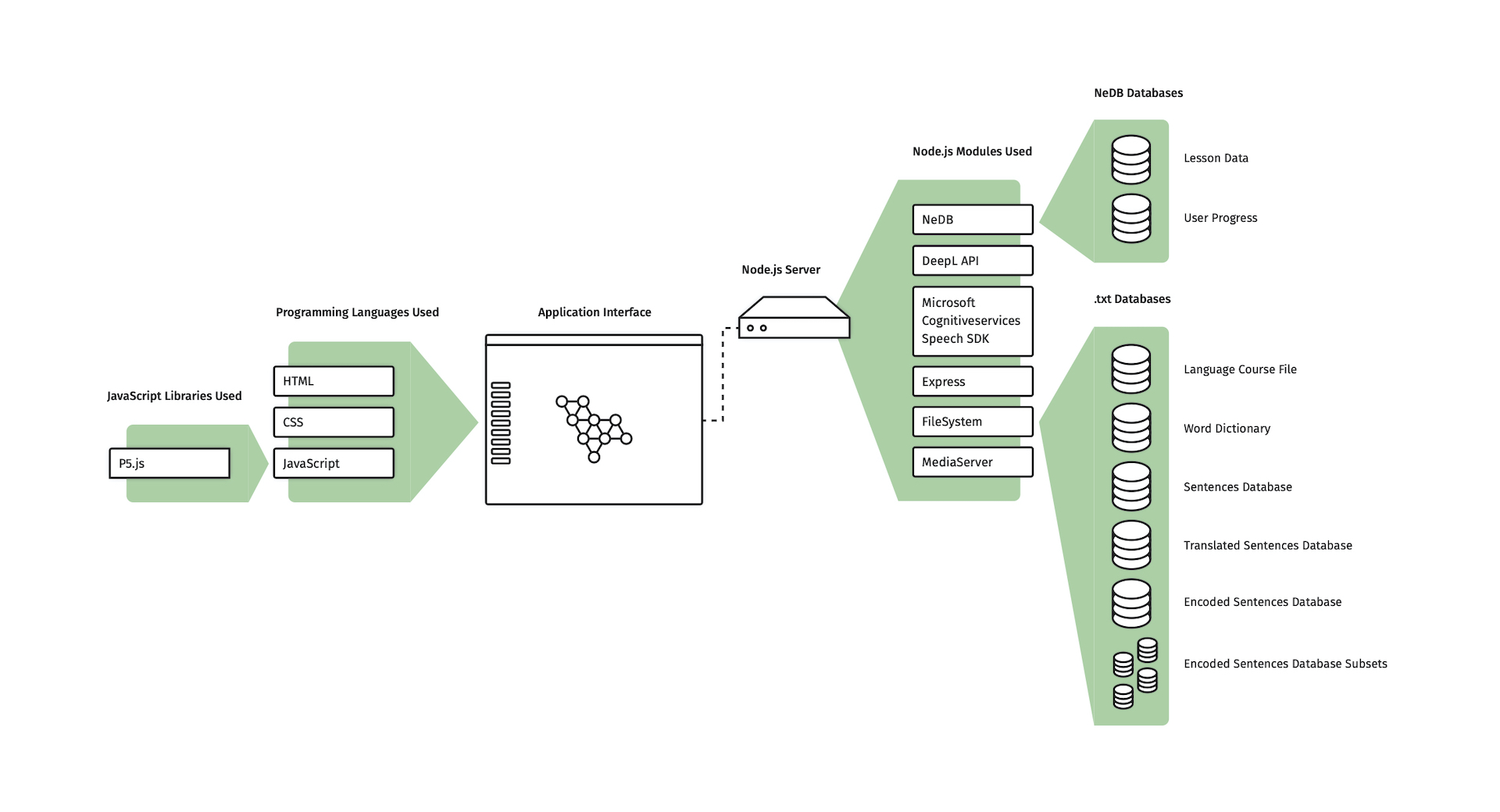
A rough technical overview of the application prototype